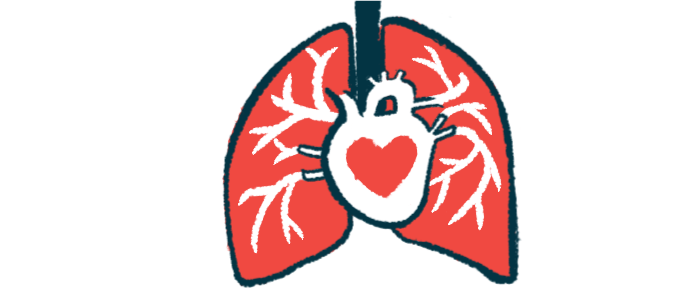Breathing workout strengthens muscles, exercise capacity: Study
Inspiratory muscle training may improve quality of life, cardiopulmonary function

Engaging in inspiratory muscle training for eight weeks may help people with pulmonary hypertension (PH) strengthen their respiratory (breathing) muscles and gain exercise capacity, a study suggests.
This is important because inspiratory (breathing in) muscle training may offer a non-invasive approach to improve the quality of life and overall cardiopulmonary (heart and lung) function of these patients.
The study, “Effects of Inspiratory Muscle Training in Patients With Pulmonary Hypertension,” was published in The American Journal of Cardiology by a team of researchers in Turkey and Germany.
PH is high blood pressure in the pulmonary arteries, which carry blood from the heart to the lungs. The earliest symptom of PH usually is shortness of breath.
Inspiratory muscle training strengthens the muscles used for breathing. When these muscles are trained regularly they become stronger and more capable of working for longer periods.
Here, the researchers studied the effects of inspiratory muscle training in people with PH.
The study (NCT04152187) included adults with PH who were assigned randomly to receive either inspiratory muscle training or no additional intervention besides their routine care. Most (91.7%) were women, and mean age was similar in the two groups (49.2 vs. 55.5 years). A total of 24 participants completed follow-up.
Using a threshold pressure loading device
Inspiratory muscle training was performed using a threshold pressure loading device, a small handheld instrument that includes a mouthpiece.
Intensity was set at 40% to 60% of the maximal inspiratory pressure, a measure of the strength of inspiratory muscles.
The protocol was followed for 30 minutes seven days a week, for a total of eight weeks, with one day each week being supervised by a professional.
Respiratory muscle strength before and after training was measured based on maximal inspiratory pressure, with an increase of 17.2 centimeters of water (cmH2O) or more indicating a clinically meaningful difference.
Maximal inspiratory pressure increased by an average of 26.3 cmH2O after training. Moreover, patients who engaged in inspiratory muscle training had a maximal inspiratory pressure an average of 26.5 cmH2O higher than controls.
Similar increases were observed for maximal expiratory (breathing out) pressure, indicating improvements in respiratory muscle strength.
Training also helped strengthen the diaphragm, a muscle that lies just below the lungs and helps with breathing. After training, the diaphragm had thickened by an average of 1.29 millimeters (about 0.05 inches). It also was thicker than in controls.
Both brachial blood pressure (measured in the upper arm) and central blood pressure (measured in the aortic artery) were reduced significantly after training, and lower in those who engaged in inspiratory muscle training versus controls.
In a six-minute walking test, patients who engaged in inspiratory muscle training were able to walk an average of 63.4 meters (about 208 feet) farther within a six-minute timeframe compared to controls.
The researchers also used the six-minute pegboard and ring test, where patients are asked to pick up pegs and rings and insert them into corresponding slots on a pegboard within six minutes.
Compared to controls, patients who engaged in inspiratory muscle training were able to insert an average of 20.9 items more within the time limit, indicating greater functional capacity.
Increases in physical activity levels
The researchers also observed increases in physical activity levels and benefits across various aspects of quality of life, including a decrease in fatigue and anxiety, as well as better sleep.
Based on these findings, the researchers concluded that inspiratory muscle training may be “an effective method in cardiopulmonary rehabilitation for patients with PH.”
“Future studies with different [inspiratory muscle training] intensities and durations will guide in finding the most appropriate prescription to improve respiratory muscle dysfunction in patients with PH,” they wrote.
Among the study’s limitations, the investigators mentioned the relatively small number of participants and not performing long-term follow-up.








